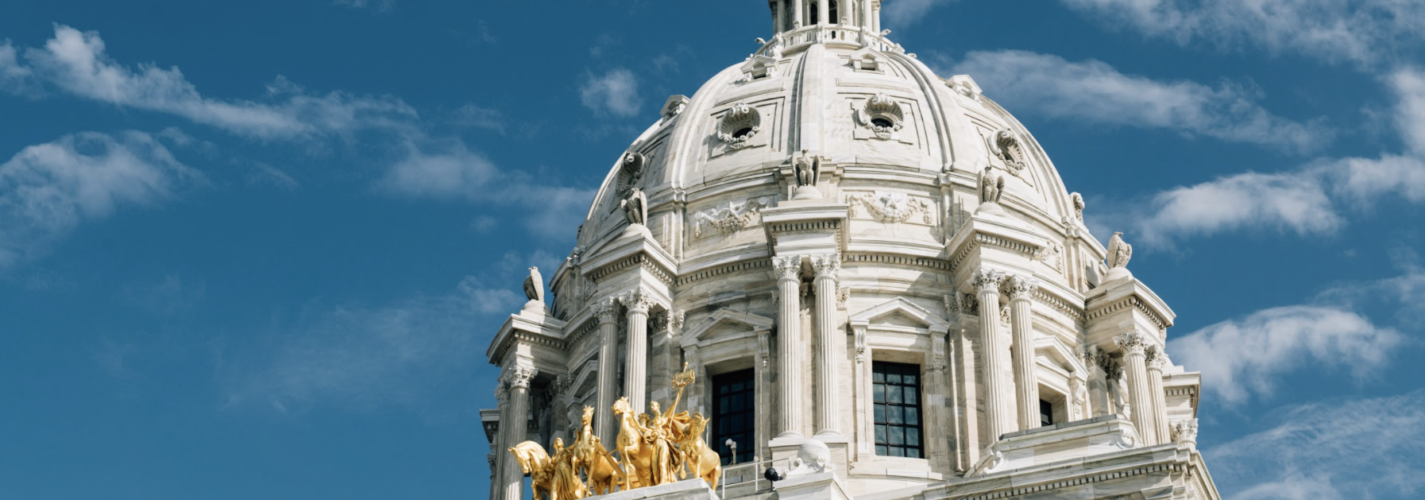Governor Proposes Many Steps Forward, but a Few Back
By Krista Kaput
During the legislative session, the Governor has two main tools to advance his policy priorities: a proposed budget outlining spending preferences and a series of policy bills developed in partnership with each state agency.
This week, legislators will begin walking through the education policy priorities the Governor has laid out in SF788/HF950. While the bill contains several provisions that will help build a more equitable education system in Minnesota, it also contains a few provisions that would take the state in the wrong direction—most notably, removing a permanent licensure pathway for teachers demonstrating success in the classroom.
A Step Backward on Teacher Licensure
Minnesota’s students should not miss out on great teachers because of arbitrary licensure barriers. Less than three years ago—and after years of bipartisan collaboration and hard work—Minnesota implemented a new, four-tiered teacher licensure system that created fair pathways to the classroom for teachers from diverse backgrounds. A provision in the Governor’s bill would strike a key element of the new system by removing a pathway to permanent licensure for Tier 2 teachers with a track record of experience and effectiveness.
This change would push teachers out of the classroom despite demonstrating a positive impact on students, exacerbating growing teacher shortages and interrupting pathways to diversify the workforce. The new tiered licensure system is working. At least 21% of teachers who hold a Tier 1 or Tier 2 license are teachers of color, while the overall workforce is stagnant at just 5.6%. These teachers now have clear pathways to permanent licensure. Eliminating this licensure pathway would push dedicated teachers—like Dr. N’Jai-An Patters—out of the profession. Kids need great teachers now more than ever, and we should not pull the rug out from under those who are making an impact.
Leadership on School Discipline
The Governor’s education policy bill includes several provisions that would change Minnesota’s approach to school discipline by improving school climate, strengthening parental involvement, and ensuring student due process. The bill would:
- Require schools use nonexclusionary discipline practices before removing a student from schools,
- Expand parental notification rights for parents of students who were suspended,
- Create guidance for schools on restorative discipline practices,
- Clarify grounds for dismissal, and
- Require schools to give suspended students access to ongoing education services.
These are important first steps to addressing Minnesota’s disproportionate suspension rates for students of color and students with disabilities.
Lunch Shaming
All students deserve to have a school meal without punishment or shame. Unfortunately, lunch shaming still happens too often in Minnesota schools. The bill would prohibit schools from denying school meals to students when they have an outstanding balance and forbid other types of lunch shaming like bans on participating in graduation ceremonies, extracurriculars, and field trips. While this bill is a great first step, advocates have urged the Governor to adopt the language in SF777/HF149—a bipartisan bill that has more specific language about what lunch shaming is.
Expanding Ethnic Studies
Research has found that students—particularly male and Latino students—who participate in ethnic studies made gains in attendance, academic performance, and the number of credits earned toward graduation. As Minnesota’s student population continues to racially diversify, it’s important that classroom materials, curriculum, and standards be evaluated and restructured to be inclusive of communities of color to ensure the success of all students. To this end, the bill establishes a statewide definition for ethnic studies and requires school districts to develop strategies for expanding access to culturally relevant curriculum.
Extra Hurdles for Charter Schools
The bill includes a few technical provisions that would put up extra hurdles for charter schools. First, it would codify that “affiliated building corporations”—entities that lease schools because charter schools cannot own their school building outright—can only own one building. In many ways, this is a solution looking for a problem, creating extra hurdles for the few charter schools that have more than one building with no clear benefit to students or the state. It would also allow the Commissioner of Education to terminate charter authorizers—the extra layer of oversight required to ensure quality in the sector—without providing clear parameters for decision-making. Authorizer quality is an important issue, but it must be addressed with objective standards that allow for review, improvement, and transparency in the sector.
The bill also proposes adding a market need and demand study for new charter schools or charter schools that want to expand. As a concept, a market need and demand study is a good idea that encourages sustainability in the sector. However, the language in the bill is vague and could lead to subjective decision-making and red tape that doesn’t center student needs.
Diversifying the Teacher Workforce
Despite ample evidence that teachers of color help close achievement gaps, reduce student suspensions, and improve high school graduation rates—especially for students of color and indigenous students—Minnesota still has a 94% white teacher workforce. The Governor’s bill contains several provisions from the 2021 Increase Teachers of Color Act, including setting a statewide goal for increasing the number of teachers of color and American Indian teachers and requiring a biannual report on the effectiveness of state-funded programs aimed at recruiting and retaining teachers of color and American Indian teachers.
What’s Next
The 84-page bill includes many other provisions that would impact students and schools, from prohibiting districts from using Indigenous names, symbols, or images for their mascots to requiring the Commissioner of Education to develop and adopt state standards for social-emotional learning. It will be heard first in the Senate, and likely soon after in the House, after which some provisions will advance and many more will be left on the cutting room floor.
How it all shakes out will hinge in part on what rises to the top in feedback from parents, educators, students, and advocates. To share your thoughts, you can reach out to the Governor and Commissioner of Education directly, as well as your local legislators.

